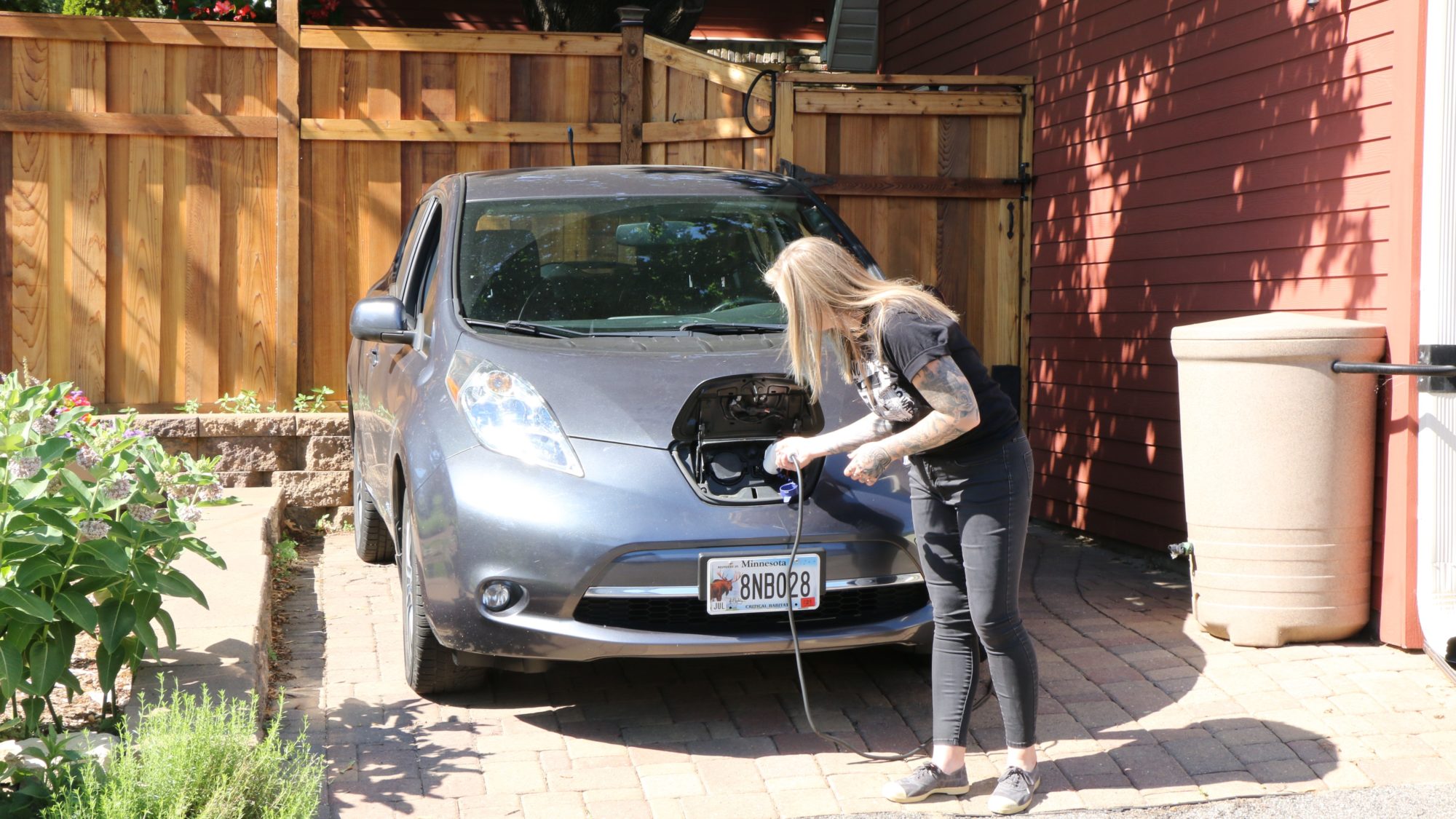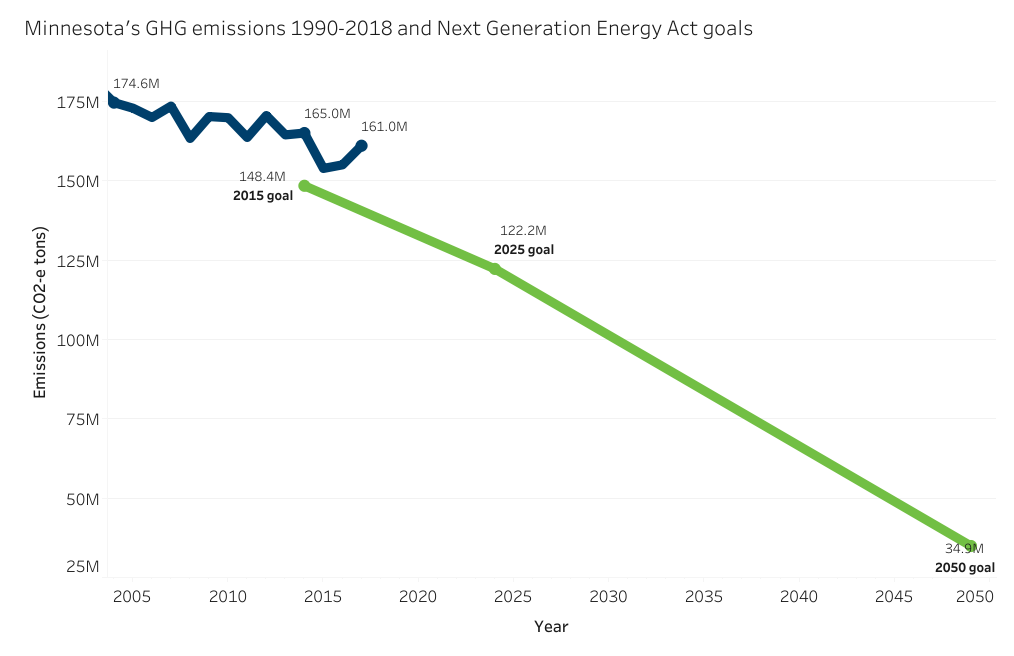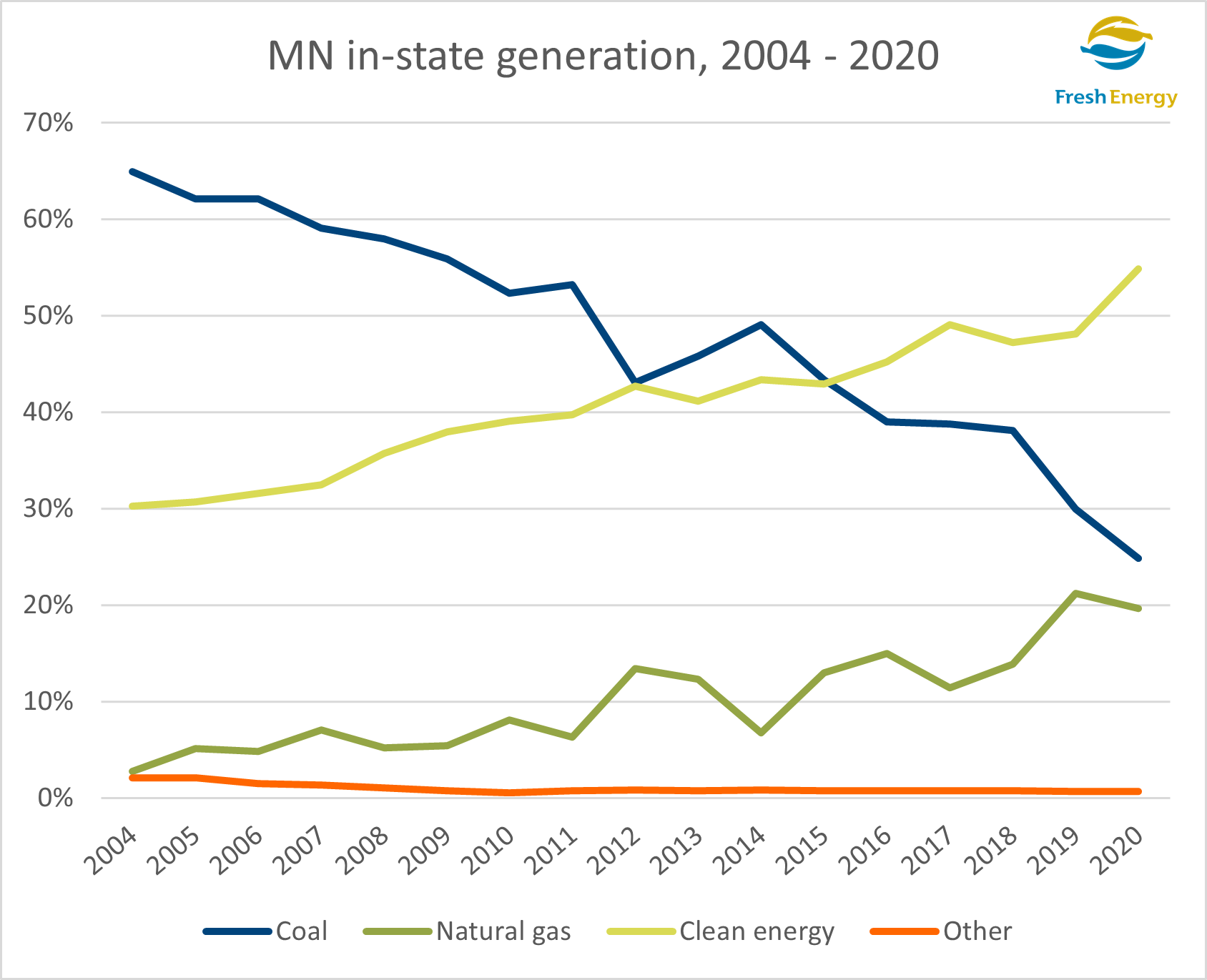Electric vehicles: Good for public health and the planet – Fresh Energy


Vehicle exhaust doesn’t just stink, it kills. Pollution from cars, trucks, planes, trains, and boats causes serious harm to both public health and our climate. Today, the transportation sector serves as one of Minnesota’s largest sources of climate change-causing greenhouse gas (GHG) emissions—accounting for a staggering 25% of state GHG emissions.
Pollutants from vehicle exhaust span a wide range, from particulate matter (PM), volatile organic compounds (VOCs), and nitrogen oxides (NOx) to other greenhouse gases like carbon dioxide. While their names may seem innocuous, their impact on human health when regularly inhaled is dire. PM2.5 alone—particulate matter made of fine inhalable particles about 30 times smaller than a single hair from your head—causes at least 100,000 premature deaths per year in the U.S. The Minnesota Pollution Control Agency (MPCA) and the Minnesota Department of Health (MDH) estimate that particulate matter and ozone pollution from all sources are responsible for 2,000 to 4,000 deaths per year in Minnesota. What’s more, studies show that under-resourced communities, children, the elderly, and people of color are disproportionately harmed by this traffic-related air pollution, even though residents of these communities generally drive and contribute to other forms of pollution less than residents of wealthier, majority-white areas.
Fortunately, electric vehicles—which have low or no tailpipe emissions—serve as one method of a multi-pronged solution for decarbonizing our economy and lowering GHG emissions. Thanks to decades of work by Fresh Energy and its partners, Minnesota is making huge strides in both generating cleaner electricity that emits less GHGs and powering end-use sectors like transportation with that cleaner electricity, as demonstrated most recently by the passage of Clean Cars Minnesota, a long-standing Fresh Energy priority.
By encouraging more widespread electric vehicle adoption alongside active transportation like walking and biking and increased investments in electrified public transit, Minnesota is taking significant steps towards meeting its GHG emissions reduction goals. Simultaneously, these steps help our state improve air quality and build healthier communities, particularly those that experience higher amounts of traffic-related air pollution.
Climate benefits
In 2016, transportation ousted the power sector and electricity production from its lengthy reign as the biggest source of U.S. greenhouse gas emissions. While Minnesota’s actions thus far to curb GHG emissions and slow the climate crisis are commendable, it’s clear from the graph below (Graph 1) that we have ample room for growth.

 Graph 1/Minnesota Pollution Control Agency
Graph 1/Minnesota Pollution Control Agency
That’s where electric vehicles (EVs) come in, presenting a tremendous opportunity for GHG emissions reduction. Over their lifetime, EVs emit fewer climate-change causing emissions than their gasoline-powered counterparts, even when factoring in the mining and battery production at the start of their lifecycles. In fact, EVs make up for, or “work off,” any upfront emissions within 6 to 16 months of use.
Plus, electric vehicles are not just cleaner today—their emissions actually go down over time as our electric grid becomes cleaner, both here in Minnesota and across the country. Thanks to common-sense decisions like not building new fossil fuel infrastructure, EV lifecycle emissions will only continue to drop, both in operation and production, as battery and EV manufacturers and EV drivers use more and more electricity that is by renewable energy. A recent study by the International Council on Clean Transportation found that EVs currently registered in the U.S. already emit 60 to 68 percent fewer GHGs than comparable gasoline cars.

 Graph 2/Fresh Energy
Graph 2/Fresh Energy
In 2020 alone, renewables like wind and solar and carbon-free sources such as hydropower and nuclear power provided 55 percent of the electricity generation in Minnesota, as seen in Graph 2—a 7 percent increase over the prior year. Last year also marked the first time that wind and solar generation surpassed coal in Minnesota. And coal plants are being retired at a breakneck pace. Of the remaining electricity-generating coal plants operating in Minnesota, all six have set retirement dates with closures beginning in 2024! Meanwhile, installed wind capacity in the U.S. has grown from under 3000 megawatts in the year 2000 to over 16,913 megawatts of wind power capacity added to the grid in 2020. That brings the total installed wind capacity in the U.S. to 122,465 megawatts. As this trend continues, GHG emissions per EV mile will only continue to decrease.
Opportunities for customers to charge their vehicles overnight at off-peak hours are also increasing. For instance, earlier this year, Xcel Energy launched its Accelerate At Home program that provides EV owners with access to Level 2 charging at home, allowing them to enjoy cheaper electricity rates overnight when wind energy tends to be most abundant.
Public health benefits
Gasoline vehicles don’t just harm the climate, they also wreak havoc on public health. Together, on-road and off-road vehicles make up approximately 44% of total air pollution in Minnesota. That’s because burning gasoline and diesel produces harmful gases like carbon monoxide, particulate matter, and nitrogen oxides, which contribute to serious respiratory diseases and can even cause premature death. According to a recent Massachusetts Institute of Technology study, road transportation emissions cause 53,000 premature deaths per year nationally, making transportation the largest single contributor to premature deaths from air pollution.
In Minnesota, on-road vehicles produce about 35% of overall emissions of NOx, particulate matter, 20% of volatile organic compounds, and about 5% of emissions of fine particles, all of which contribute to ground-level ozone pollution. The Minnesota Pollution Control Agency and the Minnesota Department of Health have determined as recently as 2019 that PM2.5 and ground-level ozone have contributed to up to 4,000 deaths per year in Minnesota, as well as 500 additional hospital stays and 800 additional emergency room visits.
Reducing emissions of these pollutants is not only critical for protecting the health of Minnesotans. It is also essential to ongoing efforts to address discriminatory redlining practices that disproportionately expose communities of color and other under-resourced communities to pollution, as they are most often located near busy roadways.
According to MPCA models of all air pollution sources in Minnesota, 32% of all our state’s communities have air pollution-related risks that sit above health guidelines. However, communities of color and under-resourced communities experience risks above health guidelines at a far higher rate. Within under-resourced communities, 46% have air pollution-related health risks above guidelines. Within communities of color, that number is a whopping 91%. In other words, under-resourced communities, and especially communities of color in Minnesota, are exposed to higher air pollution levels than the state average. That makes the electrification of our transportation system a key step on the road to both racial and climate justice.
Electrifying our transportation system will reap big benefits for Minnesota, the Midwest, and the U.S. as a whole. In nearly every U.S. state, EVs produce fewer emissions than the average fossil gas-powered car—and as our electric grid continues to rapidly decarbonize, EVs will become even more climate-friendly. Fresh Energy will remain present at every step in that process, continuing to shape and drive bold policy for a just, carbon-free future that works for everyone who calls Minnesota home.















![Toni Kroos là ai? [ sự thật về tiểu sử đầy đủ Toni Kroos ]](https://evbn.org/wp-content/uploads/New-Project-6635-1671934592.jpg)


